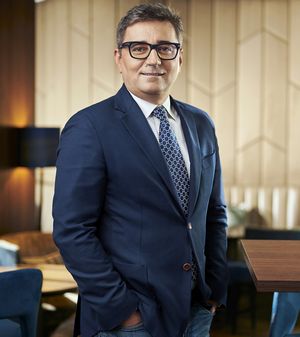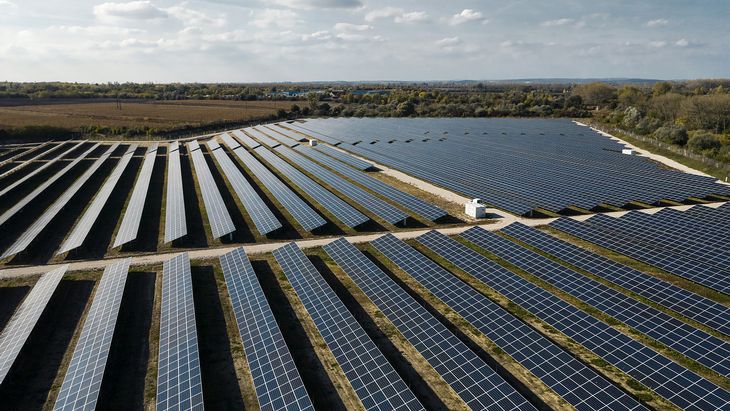MET Group has taken important and certain steps in recent years to strengthen its portfolio of green assets and invested in storage technologies. “At this moment, we have numerous operational projects or in the development phase. Thus, we entered the green energy production segment in Romania as well, by purchasing a solar park under construction, near Bucharest,” Florin Frunză, CEO, MET Romania Energy told Energynomics. “Our ambition is to reach a green portfolio of 2 GW by the end of 2026 and to become an active player in the energy transition in Europe”, added Florin Frunză.

The year 2022 represented an intense period dominated by uncertainty regarding energy access and security, leading customers to appreciate the stability and confidence offered by a long-term partner. In this sense, MET Romania Energy has proven its ability to support lasting commercial partnerships. Despite the energy crisis and increased volatility in the market, we managed to stay close to our customers in the retail segment, ensuring constant prices throughout the contract period.
Regarding the green plans, MET Group has established a special division, dedicated to the administration of Green Assets, aimed at supporting the implementation of the strategy in the renewables segment and providing the necessary expertise to achieve the objective set at the group level. Our ambition is to reach a green portfolio of 2 GW by the end of 2026 and become an active player in Europe’s energy transition.
Recent initiatives also strengthen the position in the segment of energy production from renewable sources. Among them are the wind farms in Bulgaria and Serbia, the photovoltaic ones in Italy, Spain, Poland and Romania, but also the biomass power plant in Serbia. So we anticipate that by the end of 2023, our renewable energy capacity will reach about 400 MW.
How much will you invest and what projects are currently under development? But in the medium term? Please give us some details about the projects.
MET Group has taken important and clear steps in recent years to strengthen its portfolio of green assets and invested in storage technologies. At this time, we have numerous projects, operational or under development. Thus, we entered the green energy production segment in Romania as well, by purchasing a solar park under construction near Bucharest.
The extensive experience in this segment is demonstrated by the success of the three photovoltaic parks in Hungary and the two wind parks in Bulgaria. Thus, at the group level, we continue important transactions in the photovoltaic segment in countries such as Italy, Spain, Poland or Romania. The local photovoltaic park of 52 MWp can reach an energy production of approximately 82 GWh per year, equivalent to the annual consumption of approximately 50,000 households, our country is the fourth market where MET Group takes over projects aimed at the production of energy from renewable sources.
Another example of this is the joint venture Keppel – MET Renewables AG, a strategic partnership between MET Group and Keppel Infrastructure that facilitates the identification of opportunities in the segment of energy production from renewable sources. The partnership will pursue and invest in onshore solar and wind assets, both in vacant and undeveloped fields in Western Europe that will complement MET Group’s activities in Europe.
Why did you choose Romania for the investment in photovoltaics?
MET Romania Energy aims to actively contribute to Romania’s energy transition. The investment in the photovoltaic project in the south of the country is a reconfirmation of the potential that our country has and the commitment to development that the group assumes both locally and at the EU level.
The acquisition marked an important moment for us, being the group’s first local investment in renewable energy production, following similar transactions in Italy, Spain and Poland. Moreover, the project will help us ensure the connection between our own production, the increase in liquidity on the local energy market and the related services offered to consumers in the portfolio.
What are the main changes following the conflict in Ukraine? How has this affected project costs, operations and speed? What about the rate of return on investment?
In the current context, improving the share of renewable energy at the local and European levels can reduce the dependence on traditional fossil fuels. Thus, we focus on all segments of the energy market, managing through modern solutions, adapted to current needs, to maintain the partnerships developed over time.
In terms of return on investment, local market regulations are expected to encourage renewable energy producers, increasing the number of such investments. Thus, their exemption from over taxation and the absence of an obligation to sell energy from renewable sources, for capacities put into operation after June 1, 2020, further favors the development of this segment.
What are the main barriers to project development in Romania? What can be done?
Energy safety and sustainability are important priorities of every country, including Romania. A coherent and sustainable approach to investments in the energy sector is needed to achieve the set objectives. A well-designed and implemented energy policy can encourage the development of renewable energy sources, as well as reduce dependence on traditional ones. In addition, such a policy encourages innovation and technological development in the energy sector.
Due to the geographical advantages and the good connection with the markets in the region, Romania has a high energy potential in each segment. Thus, it is important to create a predictable and stable framework to attract investment and support the development of companies. Therefore, collaboration between authorities, specialists in the field and companies is essential for sustainable development and investment support.
What else should Romania do to allow the acceleration of investments and to ensure our energy independence from supplies from Russia? How can we accelerate the adoption of European funds?
In recent years, we have seen a growing awareness of the importance of diversifying our energy supply. Currently, there is a growing number of investors interested in the development of renewable energy projects in Romania. To materialize these initiatives, we need clear strategies that give companies the security and market balancing needed to initiate and complete the projects they have in mind.
Regarding energy independence, for Romania, the second largest producer of natural gas in the European Union, natural gas continues to represent an important source of energy both in the transition period and in the long term.
Within MET Romania Energy, we aim to actively contribute to the energy transition by developing sustainable and efficient projects, and this has already started with the investment in the local photovoltaic park. At the same time, we want to remain a reliable partner for all our customers, offering them stability, predictability and solutions adapted to the needs they have.
How can we make the grid better fit for renewables and have a market ready for renewables? What can be done regarding demand-response, to accelerate its adoption in Romania?
Continued investment in energy transmission and distribution networks is essential to meet market needs. To meet the growing demand for renewable energy, it is necessary that the existing infrastructure be improved by exponentially developing the network with the projects already operational or in the pipeline.
Another important aspect is setting competitive prices for renewable energy so that it becomes an attractive option for customers that want to make their costs more efficient. In this sense, a holistic approach is useful, which considers both the production side and the consumption side, and offers tailored solutions, specific to each customer.
_____________________________________________
This interview first appeared in the printed edition of Energynomics Magazine, issued in June 2023.
In order to receive the printed or electronic issue of Energynomics Magazine, we encourage you to write us at office [at] energynomics.ro to include you in our distribution list. All previous editions are available HERE.

